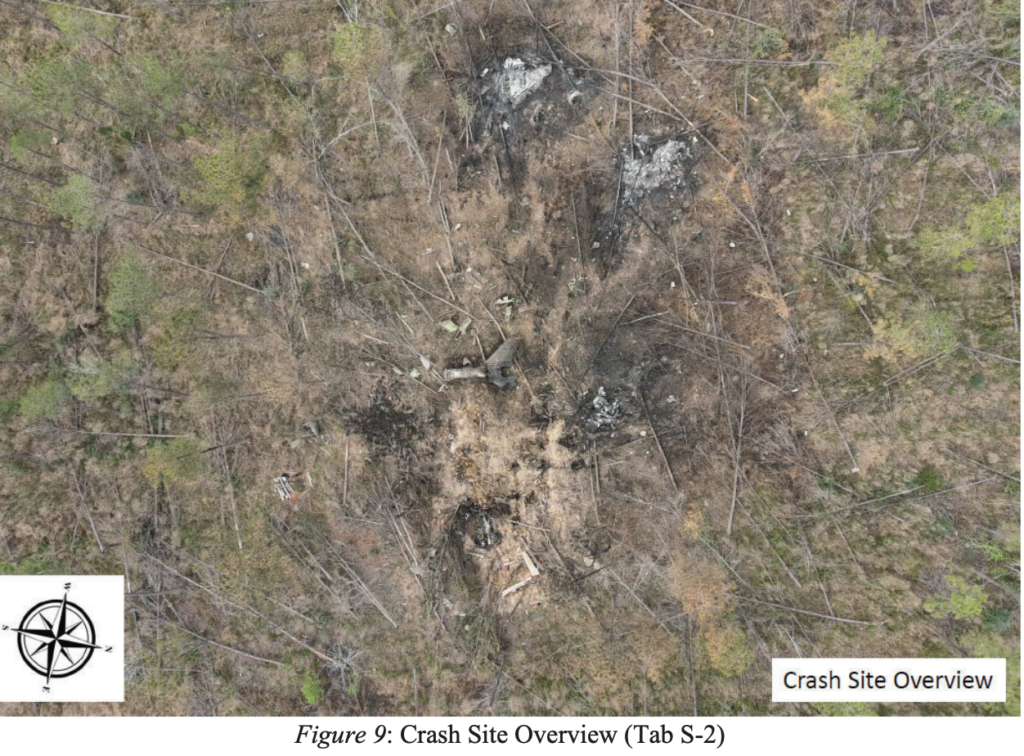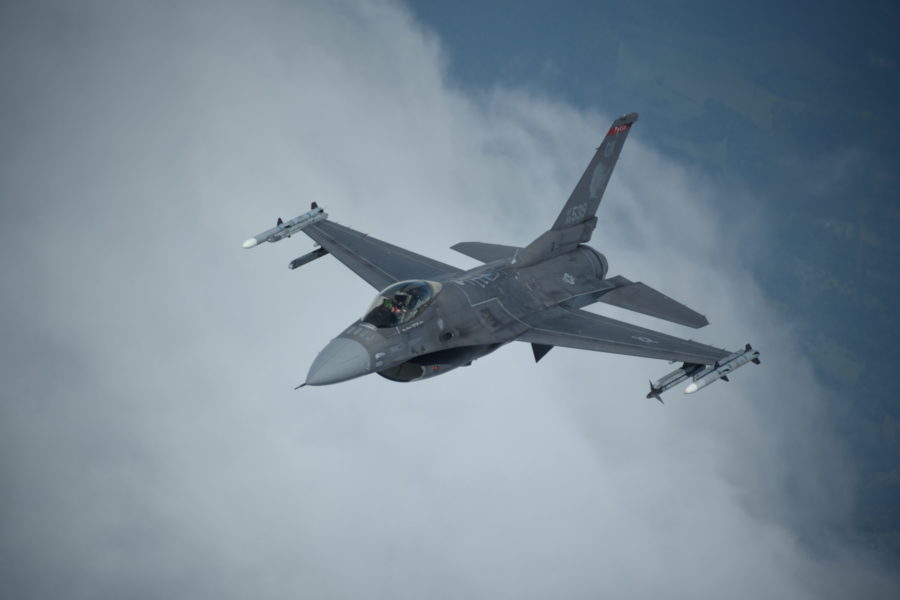A pilot incorrectly believed he had lost control of his F-16 when he ejected from it over western Louisiana this past March, resulting in the destruction of the $27 million aircraft, according to a new Accident Investigation Board report.
The report also faulted the pilot and the flight lead accompanying him during the training exercise for failing to follow Air Force rules and regulations as they attempted to intercept a civilian aircraft that was not participating in the exercise.
The March 23 crash did not result in any serious injuries to the pilot, a member of the 138th Fighter Wing of the Oklahoma Air National Guard.
According to the report, the incident took place during a routine exercise for two F-16s taking off from Ellington Field Joint Reserve Base, Texas, to practice an Aerospace Control Alert (ACA) as part of a NORAD mission as well as air-to-air refueling.
During the training exercise, however, the two F-16s encountered a civilian aircraft that was in an established hold with a nearby regional airport.
Without contacting the civilian aircraft or the air traffic control agency, the flight lead pilot directed an unplanned low-and-slow visual identification intercept of the aircraft, in violation of Air Force training rules that require such intercepts to be coordinated beforehand so the aircraft being intercepted won’t maneuver.
“As a result, the [civilian] aircraft conducting an instrument holding pattern at Beauregard Regional Airport resulted in multiple unpredictable turns. … These uncoordinated turns further increased the level of difficulty for the [F-16s] during their intercept,” the report author states.
As the two F-16s performed the intercept, both pilots flew slower than the minimum airspeed training requirements for that altitude. The flight lead was able to identify five of the six digits in the civilian aircraft’s tail number. The second pilot then approached aircraft to read the last digit, but in doing so closed to within 300 feet of it, again violating Air Force training regulations.
As the second pilot completed the intercept, he went to raise his F-16’s trailing edge flaps using the Alternate Flaps switch in the cockpit. In doing so, however, he inadvertently flipped the switch for his fighter’s Digital Backup, located next to the Alternate Flaps switch. That caused the F-16 “flight control laws [to] default to their false (not active) state, irrespective of the actual airspeed,” per the report.
The trailing edge flaps began retracting, an action that was “normal and indicative of a correctly operating flight control system” when the DBU switch has been flipped. But it caused the F-16 to shudder, and the pilot took that to mean the aircraft had “departed controlled flight,” leading to him decide to eject.
The time between the pilot flipping the wrong switch and the initiation of the ejection was brief—just four seconds, according to the report.
After that, the F-16 crashed in a sparsely wooded area, impacting the ground “in a steep, slow, upright approach and possible rotation,” according to an analysis. An image included in the report shows the remains of the fighter at the crash site, with only a few pieces of the aircraft still easily identifiable.
The AIB report determined that the main cause of the crash was the pilot’s “failure to effectively maintain positive control of the [aircraft] throughout the low speed, low altitude environment,” specifically pointing to his flipping of the DBU switch and lack of familiarity with the F-16’s handling characteristics leading to his mistaken belief that the aircraft was out of control.
On top of that, the report said the pilot and flight lead’s decision to involve a non-participating civilian aircraft in a training exercise substantially contributed to the crash, as did their failure to follow Air Force regulations governing airspeed, separation between aircraft, and pre-flight briefings on the training mission.
More broadly, the report author found in interviewing witnesses from the 138th FW’s Detachment 1 at Ellington Field that many members of the squadron didn’t have the necessary understanding “as to whether performing low/slow VID intercepts against nonparticipating and uncoordinated aircraft is a permitted practice.”


